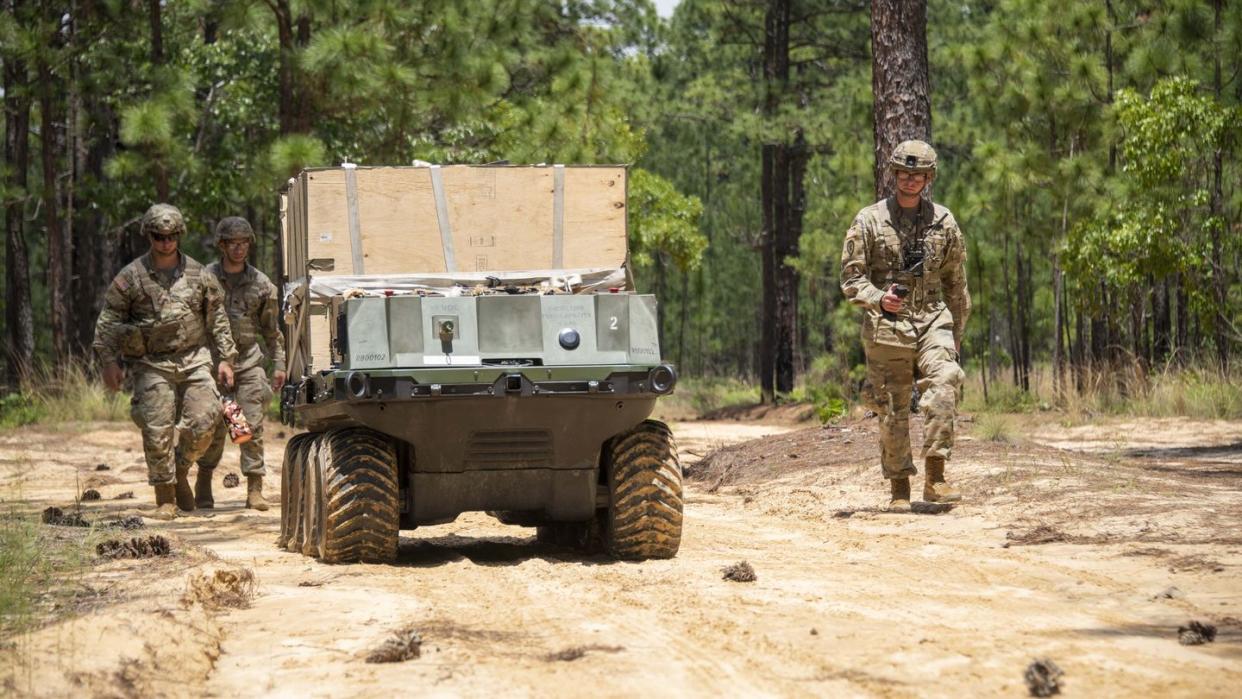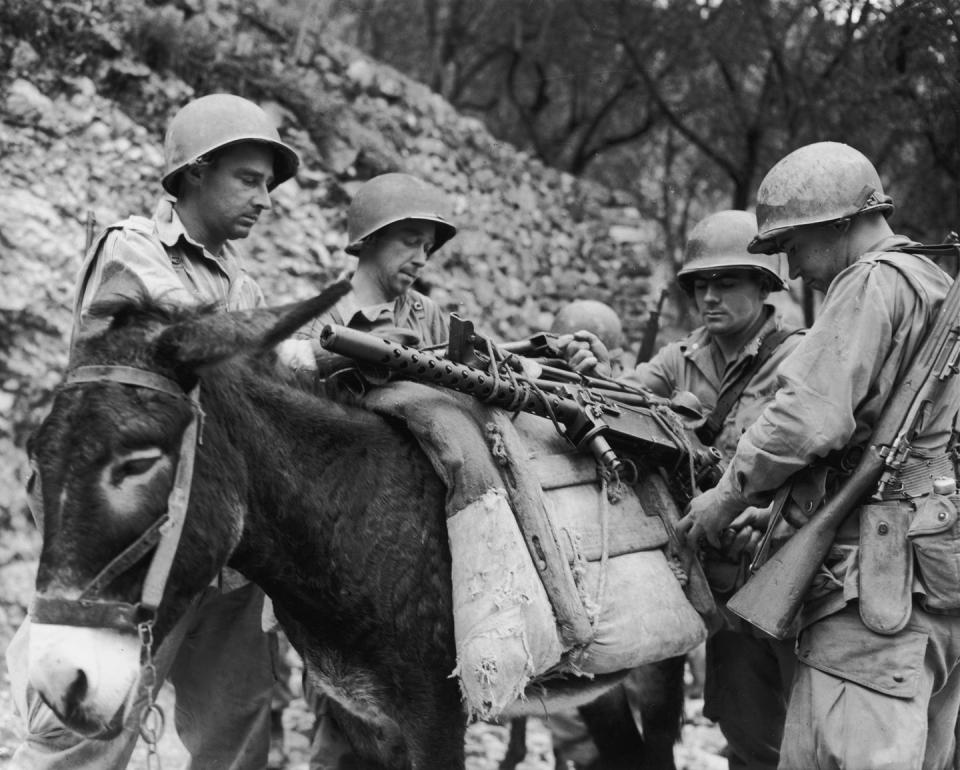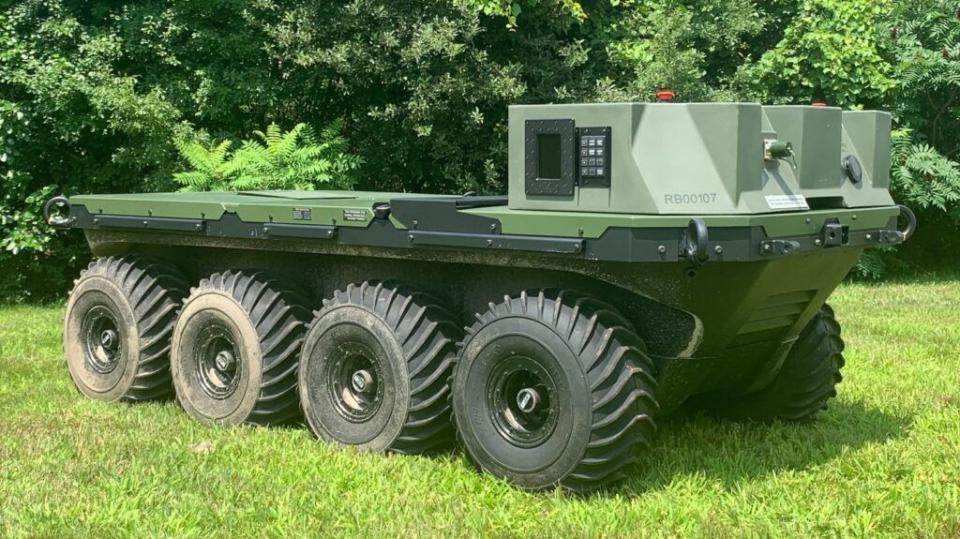The Army and Marines Are Both Pursuing Robo-Mules

The US Army and Marine Corps are pushing to deploy small, unmanned vehicles the size of ATVs.
The robots are designedx to follow troops into combat, carry their stuff, and even evacuate the wounded.
While the drones are designed to help infantry take a load off, they could collide with a new world of equipment promising to weigh “grunts” down even more.
The Army and Marines are both pursuing an entirely new vehicle with an ancient inspiration: the humble mule. The services are at various stages of progress, but they all share the same goal—to deploy drones the size of all-terrain vehicles, whose mission is to make the lowly infantry person’s load just a little bit lighter. Despite good intentions, the future of warfare makes it likely that the vehicles (even if adopted) will likely just maintain the heavy status quo.
From Mule to MUTT

Armies have used mules and donkeys as beasts of burden for thousands of years, and mules have never really gone away. They animals were used by both sides in the Civil War, and by the US Army in World War I. In World War II, the Army’s 10th Mountain Division fought across Italy with thousands of mules, and Merrill’s Marauders relied on mules in the China-Burma-India theater. In both cases, the animals were used to carry ammunition, haul supplies, and even evacuate the wounded. In Afghanistan, shortly after 9/11, US Army Special Forces used mules to transport equipment and keep up with Green Berets on horseback.
Advances in robotics, autonomous systems, and vehicle battery power have led to the concept of the robo-mule. Robo-mules don’t look like biological mules, but they have the same mission: carry stuff. They can be programmed to follow a column of soldiers while hauling hundreds of pounds of equipment, or even travel from Point A to Point B autonomously. The electrically powered mule can also take on missions that the hay-powered mule never could, such as ferrying wounded troops back to aid stations, carrying and launching weapons like the Javelin anti-tank missile, and providing electrical power for other Army gadgets.
According to Defense News, the Army and Marines recently put the new Hanhwa Arion through its paces at Marine Corps Training Area Bellows, just miles from Oahu’s Waikiki Beach. The Arion is known as a squad multipurpose equipment transport, or SMET. It is a six-by-six all-terrain vehicle that can carry 1,200 pounds. Powered by onboard batteries, it can travel up to 62 miles on a single charge, and Defense News reports that it has a top speed of 27 miles an hour on roads and 14 miles an hour cross-country.
The Marines are testing the Arion as part of a foreign vehicle evaluation program. They are looking to field a SMET vehicle of their own to accompany infantry, engineers, and other troops into battle. The Army, after a failed 2011 robo-mule project, signed a contract in 2019 for their own vehicle (SMET Increment 1) in which they agreed to purchase 674 of the robots for delivery by Fall of 2024. SMET Increment 1 can transport 1,000 pounds over a distance of 60 miles. The manufacturer, General Dynamics, delivered the first 16 vehicles in 2022.
A Heavier Load

Robo-mules are what the military used to call “force multipliers”—they allow infantrymen to travel farther, carry more equipment, and generally do their jobs better than soldiers on their own. This is mostly due to their ability to carry heavy loads that the soldiers would otherwise have to carry themselves. Under normal circumstances, a light infantry soldier might carry up to 100 pounds of equipment, which is enough for 3-5 days in the field. However, a soldier burdened with half of their body weight in stuff is an easy target, and often arrives at their objective totally exhausted.
In a 2018 experiment, the Army tested SMET candidates by fitting them with “Nine rucksacks, six boxes of MREs, and four water cans… about the equivalent of what a long-range mission for a light infantry unit would need to carry.” In that scenario, soldiers carrying only their personal weapons could maneuver against the enemy more effectively, had greater situational awareness, and arrived at their objective not totally bushed.
Robo-mules will also help infantry adjust to their new, heavier future. In the post 9/11 era, the Pentagon’s land forces focused on battling lightly armed guerrilla combatants in places like Iraq and Afghanistan. The end of those wars has shifted attention away from “low intensity conflict” to higher intensity conflict against adversaries such as Russia and China. The shift to hunting tanks and helicopters comes with a corresponding shift in weight. The Javelin anti-tank missile, for example, weighs 48 pounds, and additional missiles tip the scales at 34 pounds. A Stinger shoulder-fired surface to air missile weighs 35 pounds.
The Future
The Army is now looking for a new vehicle for Increment 2. Six years is a long time in the world of autonomous systems and electric battery technology, so breaking up the SMET buy into increments should ensure that the Army gets the latest tech. The Marines have not yet picked a MUTT—their focus on seizing islands in the South China Sea that are seldom more than a half mile wide makes a robo-mule less of a priority than autonomous vehicles like boats and aircraft.
The Takeaway
After thousands of years of toiling under the weight of their equipment, salvation for the infantry is (at long last) near. Unfortunately, this opportunity to lighten the load is colliding with the need to carry heavier weapons than ever before. Still, it’s a win for the ground pounders, even if it is a case of three steps forward and two steps back.
You Might Also Like

